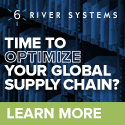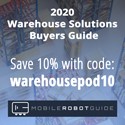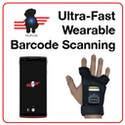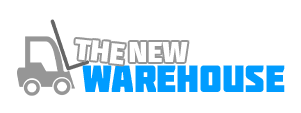
Cartonization and the Rise of the Packing Control System
When most people think about warehouse efficiency, they picture automation, robotics, or faster picking speeds. But for James Malley, Co-founder and CEO of Paccurate, the real opportunity lies in something far less flashy—how we pack boxes. In this episode, Kevin chats with James about Paccurate’s milestone of processing one billion packs and how the company is redefining packaging optimization through cartonization.
What began as a side project tackling dimensional weight challenges has evolved into a new layer of warehouse intelligence: the Packing Control System (PCS). As James explains, sometimes the smallest adjustments have the biggest ripple effects.
From Hobby to Hard-Won Validation
The road to one billion packs was a long one. What started as a side passion for improving packaging efficiency became an all-out obsession. “Cartonization is supposed to figure out the most appropriate box or mailer for any given parcel shipment,” James explained. It sounds straightforward—but for years, most companies didn’t treat packaging as a strategic focus. Labor optimization and automation took center stage while packaging decisions quietly eroded profit margins.
Then came what James calls “The Spatula Incident.” Early in the pandemic, a poorly packed box went viral online. “A badly packed box went viral on social media… the CEO got wind of it and just went on a war path internally,” he said. Suddenly, packaging engineers who had never heard directly from leadership were scrambling for answers. The incident drew a sharp line between perception and performance: poor packaging wasn’t just a waste problem—it was a brand problem. That moment helped Paccurate move from niche technology to necessity.
Introducing the Packing Control System
As Paccurate passed the billion-pack mark, James and his team realized something: packaging optimization had earned its own place among warehouse systems. “It’s really solely focused on managing packing and packaging performance,” he explained. That idea led to the creation of the Packing Control System (PCS)—a platform designed to give operators visibility, control, and flexibility over packaging decisions.
Traditional cartonization tools were rigid, often requiring IT teams or WMS vendors to make changes. The PCS changes that. It enables warehouse managers to adjust rules, test SOPs, and deploy new strategies without writing a single line of code.
A vase for one customer was showing up completely busted for every single customer. They could have changed the packaging for every shipment, which would elevate transportation costs. Instead, James shares how the PCS helps, “Anytime that vase shows up, have the system just dictate that it needs to be wrapped or needs to be packed… test it first, and then deploy it live, without worrying about code changes.” That kind of agility gives operators real control again, eliminating costly guesswork and improving both efficiency and product protection.
Smarter Packaging, Smaller Footprint
Cartonization may begin with efficiency, but its benefits extend far beyond cost savings. By improving how goods are packed and shipped, Paccurate is helping companies reach sustainability goals by reducing waste, energy use, and emissions. “We’re saving about 7,200 tons of CO₂ equivalent per year just based on reduced corrugate,” James said, noting that the savings jump by another 2,000 tons when customers switch from plastic to craft paper.
Automation is another area where packaging plays an unexpected role. Paccurate’s software now integrates with AMR systems, where better packing directly improves robot utilization. “If we could increase the cubic utilization of the robot shelf by 16%, it would increase the ROI of the whole system by like 30 or 40%,” he explained. The same principle applies across every mode of movement—from conveyors to trailers. Better use of space means fewer trips, less material, and higher returns. As James put it, “These are the things we get really excited about internally.”
Key Takeaways on Cartonization
- Cartonization is becoming a strategic pillar of warehouse efficiency, not just a packaging function.
- The Packing Control System (PCS) introduces a new software category focused solely on packaging performance.
- Paccurate customers collectively save more than 7,200 tons of CO₂ emissions per year through better carton choices.
- Optimized packaging can boost automation ROI by up to 40% through improved space utilization.
Real-time visibility tools, such as PAC Health, help warehouses stay compliant with sustainability and fill-rate regulations.
Listen to the episode below and leave your thoughts in the comments.
Guest Information
For more information on Paccurate, click here.
To connect with James Malley on LinkedIn, click here.
For more information about cartonization, check out the podcasts below.
598: Cutting Transportation Costs with Paccurate




